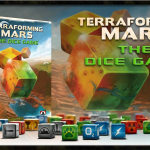Introduction
Super Nintendo Mario: In the pantheon of video game history, few titles have left as indelible a mark as the Super Nintendo Mario All-Stars collection. Released in 1993 for the Super Nintendo Entertainment System (SNES), this compilation of Mario games represents a pivotal moment in gaming history. It not only reintroduced some of the most beloved entries in the Mario franchise but also showcased the capabilities of the SNES with its updated graphics and sound. This blog post explores the significance of Super Nintendo Mario All-Stars, its impact on the gaming community, and why it remains a cherished piece of gaming history.
Origins And Development

The story of Super Nintendo Mario All-Stars begins with the success of the original Mario games on the Nintendo Entertainment System (NES). The NES, which dominated the 8-bit gaming era, introduced players to the charming world of Mario with games like “Super Mario Bros.,” “Super Mario Bros.: The Lost Levels,” and “Super Mario Bros. 3.” As the 16-bit era began with the release of the SNES, Nintendo sought to bring these classic titles to a new generation with enhanced graphics and sound.
The development of Super Nintendo Mario All-Stars was spearheaded by Nintendo’s in-house team, who recognized the opportunity to revitalize these iconic games with the SNES’s advanced hardware capabilities. The result was a collection that not only paid homage to the original titles but also offered a fresh experience for both new and veteran players.
The Games Included
Super Nintendo Mario All-Stars is more than just a collection of games; it’s a celebration of Mario’s rich history. The compilation features four classic Mario titles, each of which received significant graphical and audio upgrades:
Super Mario Bros.: Originally released in 1985, this game revolutionized platform gaming with its engaging gameplay and iconic level design. The SNES version retained the classic gameplay but presented it in a more visually refined format. The updated graphics and sound breathed new life into the Mushroom Kingdom, making it accessible to a new audience while still resonating with longtime fans.
Super Mario Bros.: The Lost Levels: Known in Japan as “Super Mario Bros.: The Lost Levels,” this game was a direct sequel to the original Super Mario Bros. It was never released in North America due to its high difficulty level, but its inclusion in Super Nintendo Mario All-Stars allowed Western audiences to experience the challenge firsthand. The game featured the same gameplay mechanics as the original but introduced new levels and obstacles, offering a formidable test for even the most seasoned players.
Super Mario Bros. 2: Released in 1988, Super Mario Bros. 2 introduced a significant departure from the series’ standard gameplay. Instead of the familiar platforming action, players were presented with a game that featured unique mechanics, including the ability to pick up and throw objects. The SNES version retained these innovative elements while updating the graphics to match the new system’s capabilities.
Super Mario Bros. 3: Often hailed as one of the greatest video games of all time, Super Mario Bros. 3 expanded on the formula established by its predecessors. With its diverse worlds, power-ups, and refined gameplay, the game became a benchmark for platforming excellence. The SNES version enhanced the visuals and sound, allowing players to experience Mario’s adventure in a new light.
Enhanced Graphics And Sound
One of the standout features of Super Nintendo Mario All-Stars is its graphical and audio improvements. The transition from the 8-bit NES to the 16-bit SNES brought about a significant leap in visual fidelity and sound quality. The game’s developers took full advantage of the SNES’s capabilities to enhance the graphics, making the Mushroom Kingdom more vibrant and detailed than ever before.
The updated graphics included smoother character animations, richer backgrounds, and more intricate level designs. The colors were more vivid, and the character sprites were larger and more detailed, contributing to a more immersive gaming experience. The enhanced audio also played a crucial role in the updated presentation, with richer sound effects and newly arranged music tracks that brought a new dimension to the classic Mario tunes.
Gameplay Innovations
While the core gameplay of each title remained true to the originals, Super Nintendo Mario All-Stars introduced several gameplay innovations that improved the overall experience. One notable addition was the inclusion of save features, allowing players to save their progress and return to their game at a later time. This was a significant improvement over the original NES games, which required players to start over from the beginning if they turned off their console.
The game also included a “Super Mario World” style map screen, which provided players with a more intuitive way to navigate through the levels. This feature helped players keep track of their progress and plan their routes more effectively. The ability to access different levels and worlds from a single screen added a layer of convenience and exploration to the game.
Reception And Legacy

Super Nintendo Mario All-Stars was met with widespread acclaim upon its release, with critics and players alike praising its presentation and gameplay enhancements. The compilation was celebrated for its ability to bring classic games into a new era while retaining their original charm and appeal. The updated graphics and sound were seen as a successful modernization of the beloved titles, making them accessible to a new generation of gamers.
The impact of Super Nintendo Mario All-Stars extended beyond its immediate success. The compilation played a significant role in preserving the legacy of Mario’s early adventures and introducing them to a broader audience. It also set a precedent for future compilations and remasters, demonstrating how classic games could be revitalized for new platforms.
The success of Super Nintendo Mario All-Stars contributed to the continued popularity of the Mario franchise and reinforced Nintendo’s reputation for creating high-quality games. The compilation’s influence can be seen in subsequent releases and remasters that aimed to capture the magic of classic games while leveraging modern technology.
The Cultural Impact
Super Nintendo Mario All-Stars holds a special place in the cultural landscape of gaming. The compilation is often remembered not only for its technical achievements but also for its role in shaping the gaming experience for a generation of players. The game’s impact extends beyond the realm of video games, influencing pop culture and inspiring a renewed appreciation for classic gaming.
The success of Super Nintendo Mario All-Stars also highlighted the enduring appeal of Mario as a character and franchise. Mario’s continued popularity can be attributed to the strong foundation laid by the original games, as well as the successful modernization efforts seen in Super Nintendo Mario All-Stars. The compilation reinforced Mario’s status as a gaming icon and solidified his place in the hearts of fans around the world.
Collecting And Preservation
For collectors and gaming enthusiasts, Super Nintendo Mario All-Stars holds a special place in the world of video game preservation. The physical cartridge of the compilation is a sought-after item among collectors, valued for its historical significance and the nostalgic memories it represents. The game’s inclusion in various retrospectives and gaming museums underscores its importance in the history of video gaming.
Preserving the legacy of Super Nintendo Mario All-Stars involves more than just maintaining physical copies of the game. Efforts to preserve the game’s digital assets, such as graphics and sound, ensure that future generations can continue to experience the magic of the compilation. Emulation and digital re-releases play a crucial role in keeping the game accessible and relevant in the modern gaming landscape.

Conclusion
Super Nintendo Mario All-Stars stands as a testament to the enduring appeal of Mario and the timeless nature of classic video games. Released during a pivotal moment in gaming history, the compilation successfully brought beloved titles into the 16-bit era while preserving their original charm and gameplay. The enhancements in graphics, sound, and gameplay innovations showcased the capabilities of the SNES and provided players with a refreshed experience of Mario’s early adventures.
The impact of Super Nintendo Mario All-Stars extends far beyond its initial release, influencing the gaming industry and preserving the legacy of Mario for future generations. The compilation’s cultural significance, combined with its role in the history of video gaming, ensures that it remains a cherished part of gaming history. As we look back on the legacy of Super Nintendo Mario All-Stars, it serves as a reminder of the magic that classic games can bring and the lasting impact they can have on the world of gaming.










